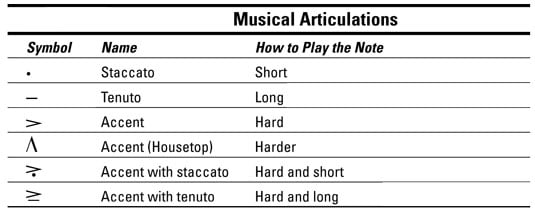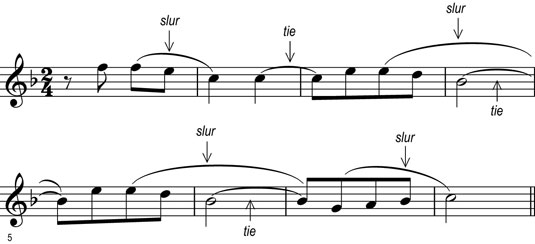The various ways to play a note on the piano are called articulations, often referred to as attacks. You use articulation to place an accent on certain notes or slur over other notes and generally add interest and emotion to your playing. You can change the entire sound and style of a song by changing even just a few articulations.
Interpreting articulation symbols
Articulations come in all shapes. Each one is represented by a symbol that tells you how to play the note: accented, long, short, and so on:

In addition to the symbols that apply to only one note, composers use an articulation marking that applies to a group of notes. In music, a slur is a curved line over two or more notes of different pitches that indicates that the notes should be played legato, or connected in a smooth manner. Think of playing the notes within a slur as if they’re being sung by someone with a beautiful voice.
Be careful not to mistake a tie for a slur. A slur is applied to notes of different pitch and often groups many notes in a melodic phrase. A tie is also a curved line, but it connects one notehead to another notehead of the same pitch.

Wielding the power of articulation
If you play music without articulations, you can forget about pleasing your audience. Listening to music without articulations is like suffering through a speech given in a monotone voice. Boring. Use articulations to keep your piano playing interesting.
If a piece of music doesn’t already have articulations, choose articulations that you think may fit the music and apply them. Pencil in your own articulations and see how the music sounds your way. It’s not like you’re changing the melody, just the style. Of course, following the composer’s articulations (when they exist) is always your best bet for achieving the sound and style the composer intended — if that’s your goal.

